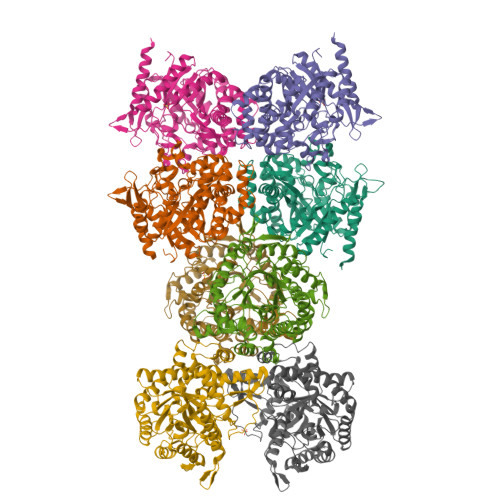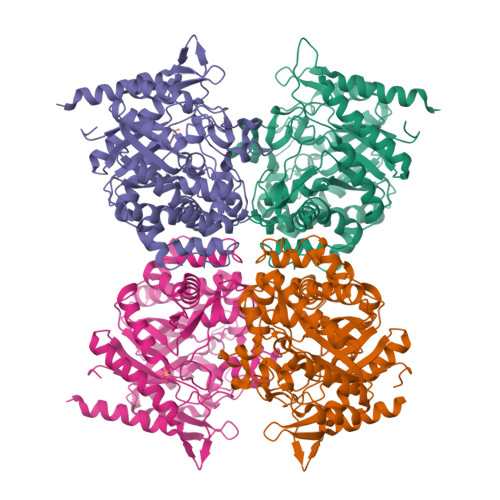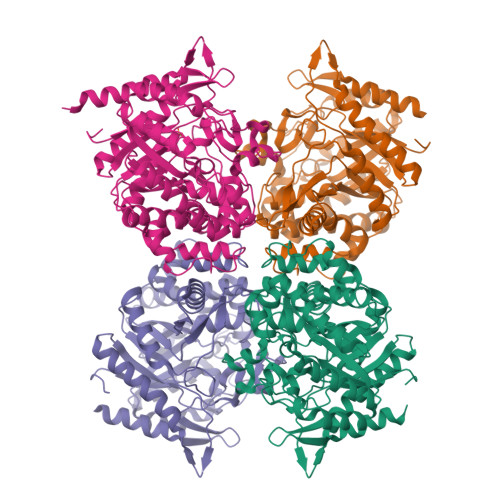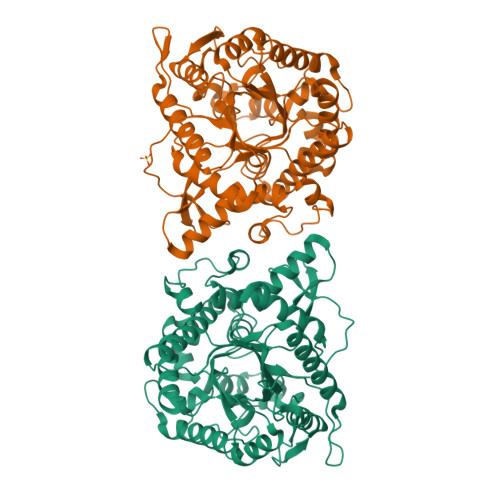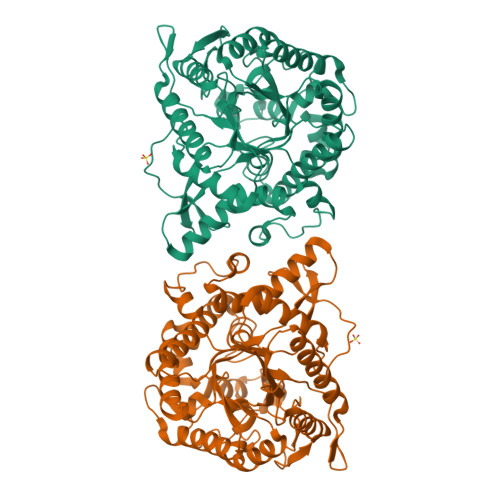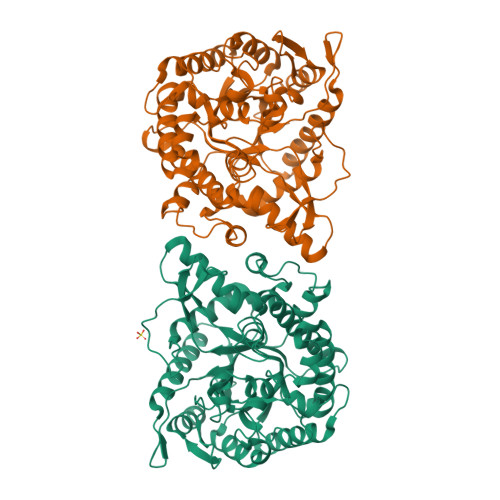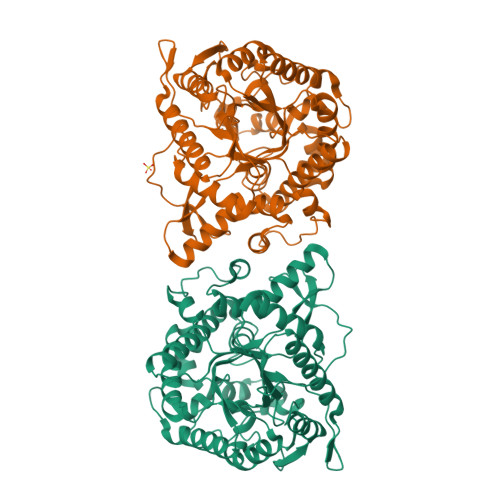Oligomerization as a strategy for cold adaptation: Structure and dynamics of the GH1 beta-glucosidase from Exiguobacterium antarcticum B7.
Zanphorlin, L.M., de Giuseppe, P.O., Honorato, R.V., Tonoli, C.C., Fattori, J., Crespim, E., de Oliveira, P.S., Ruller, R., Murakami, M.T.(2016) Sci Rep 6: 23776-23776
- PubMed: 27029646
- DOI: https://doi.org/10.1038/srep23776
- Primary Citation of Related Structures:
5DT5, 5DT7 - PubMed Abstract:
Psychrophilic enzymes evolved from a plethora of structural scaffolds via multiple molecular pathways. Elucidating their adaptive strategies is instrumental to understand how life can thrive in cold ecosystems and to tailor enzymes for biotechnological applications at low temperatures. In this work, we used X-ray crystallography, in solution studies and molecular dynamics simulations to reveal the structural basis for cold adaptation of the GH1 β-glucosidase from Exiguobacterium antarcticum B7. We discovered that the selective pressure of low temperatures favored mutations that redesigned the protein surface, reduced the number of salt bridges, exposed more hydrophobic regions to the solvent and gave rise to a tetrameric arrangement not found in mesophilic and thermophilic homologues. As a result, some solvent-exposed regions became more flexible in the cold-adapted tetramer, likely contributing to enhance enzymatic activity at cold environments. The tetramer stabilizes the native conformation of the enzyme, leading to a 10-fold higher activity compared to the disassembled monomers. According to phylogenetic analysis, diverse adaptive strategies to cold environments emerged in the GH1 family, being tetramerization an alternative, not a rule. These findings reveal a novel strategy for enzyme cold adaptation and provide a framework for the semi-rational engineering of β-glucosidases aiming at cold industrial processes.
Organizational Affiliation:
Brazilian Bioethanol Science and Technology Laboratory, Campinas, São Paulo, Brazil.








